The global food system faces many complex challenges, including hunger, malnutrition, an ever-growing global population, limited natural resources and a changing climate. A solution is to enhance sustainable crop production, resilient value chains and consumer access to affordable and varied diets. Millets, in their diversity, can contribute to this solution as affordable sources of nutrients for healthy diets that can be cultivated in various adverse climates and arid regions with minimal external inputs.
The International Year of Millets 2023 is an opportunity to raise awareness of the multiple benefits of millets, from nutrition and health to environmental sustainability and economic development. The Year will strengthen science-policy interaction, facilitate partnerships, mobilize stakeholders to take action on promoting and producing millets, and encourage consumption of millets by the general public.
Everyone has a role to play - from governments and private sector companies to the general public, including chefs, home cooks and youth. We need to work together to unleash the potential of millets for human and planetary health and well-being.
Millets encompass a diverse group of small-grained dryland cereals. Millet species include pearl, proso, foxtail, barnyard, little, kodo, browntop, finger and guinea millets, as well as black and white fonio, sorghum, teff and Job’s tears, and many other diverse and local species.
Millets, as whole grains, have a higher nutritional content compared to refined cereals including wheat, rice or corn. Millets can be good sources of minerals, dietary fibre, vitamins and protein, depending on the species, variety and growing conditions. They have a lower glycaemic index than other grains so could be a good option for people with high-blood sugar. Millets are also gluten-free and a cost-effective source of iron. As whole grains, each variety of millets provide different amounts and types of fibre. Dietary fibre has a role in regulating bowel function, blood sugar and lipids, and satiation.
Millets were among the first plants to be domesticated and remain a traditional staple crop for millions in Sub-Saharan Africa and Asia. They can thrive on poor soils, resist or tolerate many crop diseases and pests, and are resilient to adverse climatic conditions. By providing land cover in arid areas, they reduce further soil degradation and help support biodiversity and sustainable land restoration. Millets can help to overcome food scarcity in difficult periods, contributing to the food security and nutrition of vulnerable populations.
The genetic diversity of millets offers a myriad of opportunities for economic development through income-generating activities in the food sector. Millet value chains can be strengthened through mechanization, digital tools and technologies. New market opportunities can be generated through innovation in production, processing and food technology in order to supply food products that are attractive to all including youth, or in niche markets for specific professional applications (therapeutics, pharmaceuticals, specialty chemistry, etc.).
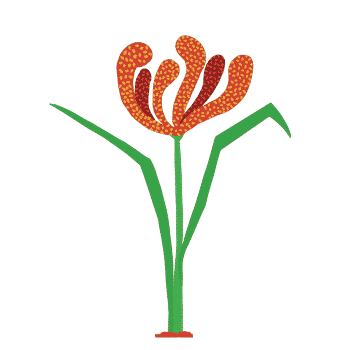
Eleusine coracana
Originally from Sudan, finger millet is mainly grown in eastern Africa (Uganda, Kenya and the United Republic of Tanzania) and southern Asia (India and Nepal). While India is the largest producer of finger millets today, it is also cultivated in Ethiopia, Rwanda, Malawi, Sudan, Zambia and Zimbabwe to a lesser extent. Finger millet is high in thiamin, copper, magnesium, phosphorus and selenium. It is also a source of iron.
* Values based on single data source.
¹ Value presented refers to the INFOODS component definitions <FATCE> or <FAT-> and differs from the standardized component of <FAT>.
Reference: 10 (id: A010).
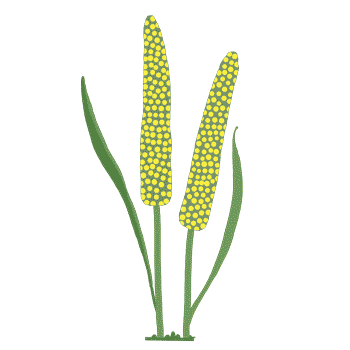
Pennisetum glaucum
Originating in West Africa, today pearl millet is distributed widely across the semi-arid tropics of Africa and Asia, and is primarily grown in sub-Saharan Africa. Pearl millet is high in copper, iron, magnesium, phosphorus, selenium and zinc. It is also a source of thiamin and vitamin B6.
* Mean values calculated based on several data sources.
Reference: 9 (id: 01_032, 01_017); 10 (id: A003); 11 (id: 01025).

Setaria italica
Foxtail millet originated in northern China, before it spread to other parts of the world. Today, it is primarily grown in China, India, Afghanistan, Japan, the Democratic People’s Republic of Korea, the Republic of Korea and Georgia. Foxtail millet is high in thiamin, pantothenic acid, copper, magnesium and phosphorus. It is source of iron, niacin, vitamin B6 and zinc.
* Mean values calculated based on several data sources.
Reference: 4 (id: 01-0006); 5 (id: 01-5-101); 8 (id: 01002).
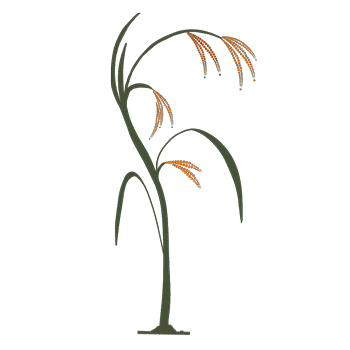
Panicum sumatrense
Evidence points towards the Indian peninsula as the origin of little millet. Today, it is mainly grown in India, Sri Lanka, Myanmar, Malaysia, Nepal and China. Little millet is high in copper, magnesium, selenium and sources of thiamin, phosphorus and zinc.
* Values based on single data source.
¹ Value presented refers to the INFOODS component definitions <FATCE> or <FAT-> and differs from the standardized component of <FAT>.
Reference: 10 (id: A016).
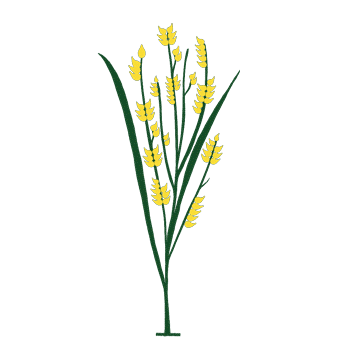
Eragrostis tef
Originally from Ethiopia, today teff is primarily grown in Ethiopia and Eritrea, where it is a major staple crop. It is also cultivated in the United States of America, South Africa, Australia, India and Kenya. Teff is high in thiamin, vitamin B6, copper, iron, magnesium, phosphorus, and a source of riboflavin, niacin and pantothenic acid.
* Values based on single data source.
Reference: 6 (id: 169747).
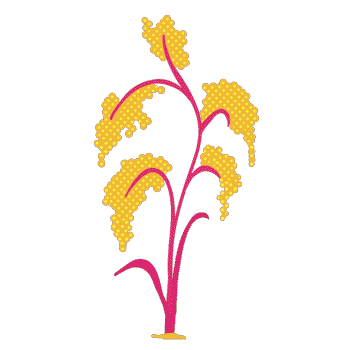
Panicum miliaceum
The origins of proso millet go back to northern China. Today, it is mainly cultivated in China, India, Nepal, the Russian Federation, Ukraine, Belarus, the Near East, the Republic of Türkiye, Romania and the United States of America. Proso millet is high in thiamin, copper, phosphorus, magnesium, zinc, and sources of iron, selenium, riboflavin, niacin, pantothenic acid and vitamin B6.
* Mean values calculated based on several data sources.
Reference: 4 (id: 01-0007); 5 (id: 01-9-002); 6 (id: 169702); 7; 8 (id: 01011).

Sorghum bicolor
The origins of sorghum cultivation were found in the eastern Sudanese savannah. Today, Nigeria, the United States of America and Sudan are the largest producers of sorghum globally. Sorghum is high in copper, magnesium, phosphorus and selenium, and is a source of iron, zinc, thiamin, niacin, pantothenic acid and vitamin B6.
* Mean values calculated based on several data sources.
Reference: 4 (id: 01-0027); 8 (id: 01140); 9 (id: 01_039, 01_040, 01_041); 10 (id: A005); 11 (id: 01037, 01039); 12 (id: F008474).
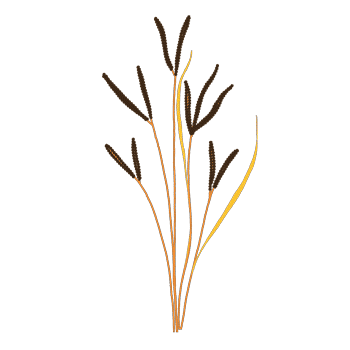
Digitaria iburua
Originally from West Africa, today, black fonio is mainly produced in Nigeria and Niger, and also cultivated in Benin, Cameroon, Côte d’Ivoire and Togo.
* Mean values calculated based on several data sources.
¹ Protein values are not standardized.
² Value presented refers to the INFOODS component definitions <FATCE> or <FAT-> and differs from the standardized component of <FAT>.
³ Value presented refers to the INFOODS component definitions <FIB-> and differs from the standardized component of <FIBTG>.
Reference: 3.
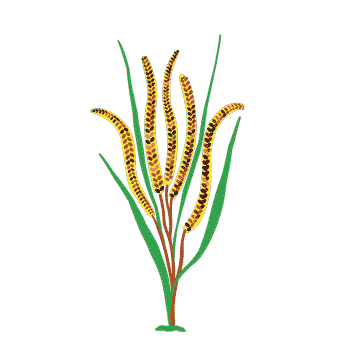
Paspalum scrobiculatum
Kodo millets originated in India. Today, kodo millet is primarily grown in damp habitats across the tropics and subtropics of the world. Kodo millet is high in magnesium and selenium and sources of thiamin, riboflavin, copper and zinc.
* Mean values calculated based on single data source.
¹ Value presented refers to the INFOODS component definitions <FATCE> or <FAT-> and differs from the standardized component of <FAT>.
Reference: 10 (id: A010).
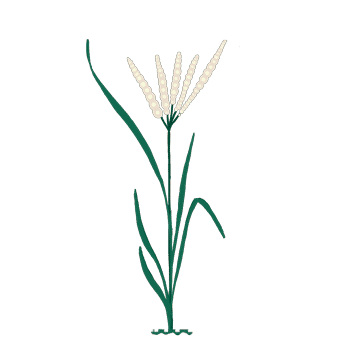
Digitaria exilis
The origins of white fonio point to West Africa. Today, white fonio is primarly grown in Guinea, followed by Nigeria, Mali, Burkina Faso, Côte d’Ivoire, Niger, Benin, Senegal and Guinea-Bissau. White fonio is high in copper and is a source of folate, magnesium, phosphorus and zinc.
* Mean values calculated based on single data source.
Reference: 4 (id: 01_050).
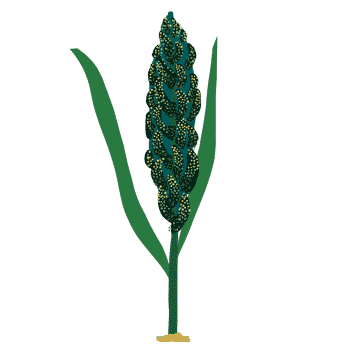
Echinochloa esculenta
The origins of barnyard millet are found in tropical Asia. Barnyard millet is widely cultivated in Asia, particularly in India, China, Japan, the Democratic People’s Republic of Korea and the Republic of Korea. Barnyard millet is high in pantothenic acid, phosphorous and zinc. It is a source of thiamin, copper and magnesium.
* Mean values calculated based on single data source.
Reference: 8 (id: 01139).
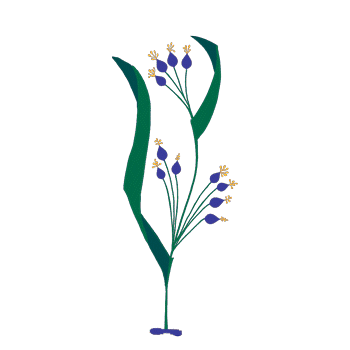
Coix lacryma-jobi
Job’s Tears are native to the Indo-Myanmar region. They are used as food and herbal medicine in Asian countries such as China, Japan, the Philippines, Myanmar, Thailand, Sri Lanka and India. Job’s tears are high in copper, magnesium, phosphorus and zinc. They are also a source of iron and thiamin.
* Mean values calculated based on several data sources.
¹ Value presented refers to the INFOODS component definitions <FATCE> or <FAT-> and differs from the standardized component of <FAT>.
Reference: 1 (id: A008), 2, 5 (id: 01-9-008), 8 (id: 01138).
1___Philippine Food Composition Tables Online Database, 2019. Department of Science and Technology, Food and Nutrition Research Institute (DOST-FNRI). Philippines. [food code: A008].
2___Laxmisha K.M., Semwal D.P., Gupta V., Katral A., Bisht I.S., Mehta P.S., Arya M., Bhardwaj R., Bhatt K.C. (2022). Nutritional profiling and GIS-based grid mapping of Job’s tears (Coix lacryma-jobi L.) germplasm. Applied Food Research 2, 100166.
3___Ocloo F.C.K, Agbemavor W.S.K., Ayeh E.A., Egblewogbe M.N.Y.H., Odai B.T. (2022) Nutritional composition, physicochemical and functional properties of Black Fonio (Digitaria iburua Stapf). Philippine Journal of Science, 152(1):231-243.
4___Shaheen N., Rahim A.T.MA, Mohiduzzaman MD., Banu C.P., Bari MD L., Basak A.B., Mannan MA, Bhattacharjee L., Stadlmayr B. (2013) Food Composition Table for Bangladesh. Institute of Nutrition and Food Science, Centre for Advanced Research in Sciences, University of Dhaka. Dhaka, Bangladesh. [food code: 01-0007; 01-0006; 01-0027].
5___Institute of Nutrition and Food Safety. (2002). China food composition – Book 1 (2nd ed.). Beijing: Peking University Medical Press, China, 393pp. [food codes: 01-9-002; 01-5-101; 01-9-008].
6___USDA National Nutrient Database for Standard Reference Legacy, 2019. U.S. Department for Agriculture, Agricultural Research Service, Nutrient Data Laboratory. Retrieved from FoodData Central https://fdc.nal.usda.gov/ (accessed 30 November 2022). [food codes: 169747; 169702].
8___Standard Tables of Food Composition in Japan. 8th revised edition, 2020. The Subdivision on Resources, The Council for Science and Technology Ministry of Education, Culture, Sports, Science and Technology, Japan. [food codes: 01011; 01139; 01002; 01138; 01140].
9___Vincent A., Grande F., Compaoré E., Amponsah Annor G., Addy P.A., Aburime L.C., Ahmed D., Bih Loh A.M., Dahdouh Cabia S., Deflache N., Dembélé F.M., Dieudonné B., Edwige O.B., Ene-Obong H.N., Fanou Fogny N., Ferreira M., Omaghomi Jemide J., Kouebou P.C., Muller C., Nájera Espinosa S., Ouattara F., Rittenschober D., Schönfeldt H., Stadlmayr B., van Deventer M., Razikou Yiagnigni A. & Charrondière U.R. (2020). FAO/INFOODS Food Composition Table for Western Africa (2019) User Guide & Condensed Food Composition Table / Table de composition des aliments FAO/INFOODS pour l'Afrique de l'Ouest (2019) Guide d'utilisation & table de composition des aliments condensée. Rome, FAO. [food codes: 01_032; 01_017; 01_039; 01_040; 01_041; 01_050].
10___Longvah T., Ananthan R., Bhaskarachary K., Venkaiah K. (2017). Indian Food Composition Tables 2017. National Institute of Nutrition, Department of Health Research, Ministry of Health & Family Welfare, Government of India. Hyderabad, India. [food code: A003; A005; A010; A016; A017].
11___FAO/Government of Kenya (2018). Kenya Food Composition Tables. Nairobi, 254 pp. I8897EN.pdf (fao.org) [food codes: 01037; 01039; 01025].
Data harmonization was carried out for most components, but due to missing information in data sources some values have been marked to indicate they are not directly comparable with others.